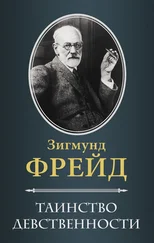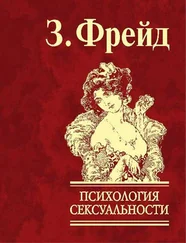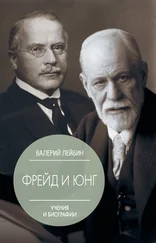Зигмунд Фрейд - Totem and Taboo
Здесь есть возможность читать онлайн «Зигмунд Фрейд - Totem and Taboo» весь текст электронной книги совершенно бесплатно (целиком полную версию без сокращений). В некоторых случаях можно слушать аудио, скачать через торрент в формате fb2 и присутствует краткое содержание. Год выпуска: 2014, Издательство: epubBooks Classics, Жанр: Психология, на английском языке. Описание произведения, (предисловие) а так же отзывы посетителей доступны на портале библиотеки ЛибКат.
- Название:Totem and Taboo
- Автор:
- Издательство:epubBooks Classics
- Жанр:
- Год:2014
- ISBN:нет данных
- Рейтинг книги:3 / 5. Голосов: 1
-
Избранное:Добавить в избранное
- Отзывы:
-
Ваша оценка:
- 60
- 1
- 2
- 3
- 4
- 5
Totem and Taboo: краткое содержание, описание и аннотация
Предлагаем к чтению аннотацию, описание, краткое содержание или предисловие (зависит от того, что написал сам автор книги «Totem and Taboo»). Если вы не нашли необходимую информацию о книге — напишите в комментариях, мы постараемся отыскать её.
Totem and Taboo — читать онлайн бесплатно полную книгу (весь текст) целиком
Ниже представлен текст книги, разбитый по страницам. Система сохранения места последней прочитанной страницы, позволяет с удобством читать онлайн бесплатно книгу «Totem and Taboo», без необходимости каждый раз заново искать на чём Вы остановились. Поставьте закладку, и сможете в любой момент перейти на страницу, на которой закончили чтение.
Интервал:
Закладка:
The oldest form of sacrifice, older than the use of fire and the knowledge of agriculture, was therefore the sacrifice of animals, whose flesh and blood the god and his worshippers ate together. It was essential that both participants should receive their shares of the meal.
Such a sacrifice was a public ceremony, the celebration of a whole clan. As a matter of fact all religion was a public affair; religious duty was a part of the social obligation. Sacrifice and festival go together among all races; each sacrifice entails a holiday and no holiday can be celebrated without a sacrifice. The sacrificial festival was an occasion for joyously transcending one’s own interests and emphasizing social community and community with god.
The ethical power of the public sacrificial feast was based upon primal conceptions of the meaning of eating and drinking in common. To eat and drink with some one was at the same time a symbol and a confirmation of social community and of the assumption of mutual obligations; the sacrificial eating gave direct expression to the fact that the god and his worshippers are communicants, thus confirming all their other relations. Customs that to–day still are in force among the Arabs of the desert prove that the binding force resulting from the common meal is not a religious factor but that the subsequent mutual obligations are due to the act of eating itself. Whoever has shared the smallest bite with such a Bedouin, or has taken a swallow of his milk, need not fear him any longer as an enemy, but may be sure of his protection and help. Not indeed, forever, strictly speaking this lasts only while it may be assumed that the food partaken remains in the body. So realistically is the bond of union conceived; it requires repetition to strengthen it and make it endure.
But why is this binding power ascribed to eating and drinking in common? In the most primitive societies there is only one unconditional and never failing bond, that of kinship. The members of a community stand by each other jointly and severally, a kin is a group of persons whose life is so bound into a physical unity that they can be considered as parts of a common life. In case of the murder of one of this kin they therefore do not say: the blood of so and so has been spilt, but our blood has been spilt. The Hebraic phrase by which the tribal relation is acknowledged is: “Thou art my bone and my flesh”. Kinship therefore signifies having part in a general substance. It is natural then that it is based not only upon the fact that we are a part of the substance of our mother who has borne us, and whose milk nourished us, but also that the food eaten later through which the body is renewed, can acquire and strengthen kinship. If one shared a meal with one’s god the conviction was thus expressed that one was of the same substance as he; no meal was therefore partaken with any one recognized as a stranger.
The sacrificial repast was therefore originally a feast of the kin, following the rule that only those of kin could eat together. In our society the meal unites the members of the family; but the sacrificial repast has nothing to do with the family. Kinship is older than family life; the oldest families known to us regularly comprised persons who belonged to various bonds of kinship. The men married women of strange clans and the children inherited the clan of the mother; there was no kinship between the man and the rest of the members of the family. In such a family there was no common meal. Even to–day savages eat apart and alone, and the religious prohibitions of totemism as to eating often make it impossible for them to eat with their wives and children.
Let us now turn to the sacrificial animal. There was, as we have heard, no meeting of the kin without animal sacrifice, but, and this is significant, no animal was slaughtered except for such a solemn occasion. Without any hesitation the people ate fruits, game and the milk of domestic animals, but religious scruples made it impossible for the individual to kill a domestic animal for his own use. There is not the least doubt, says Robertson Smith, that every sacrifice was originally a clan sacrifice, and that the killing of a sacrificial animal originally belonged to those acts which were forbidden to the individual and were only justified if the whole kin assumed the responsibility . Primitive men had only one class of actions, which were thus characterized, namely, actions which touched the holiness of the kin’s common blood. A life which no individual might take and which could be sacrificed only through the consent and participation of all the members of the clan was on the same plane as the life of a member of the kin. The rule that every guest of the sacrificial repast must partake of the flesh of the sacrificial animal, had the same meaning as the rule that the execution of a guilty member of the kin must be performed by the whole kin. In other words: the sacrificial animal was treated like one of kin; the sacrificing community, its god, and the sacrificial animal were of the same blood , and the members of a clan.
On the basis of much evidence Robertson Smith identifies the sacrificial animal with the old totem animal. In a later age there were two kinds of sacrifices, those of domestic animals which usually were also eaten, and the unusual sacrifice of animals which were forbidden as being unclean. Further investigation then shows that these unclean animals were holy and that they were sacrificed to the gods to whom they were holy, that these animals were originally identified with the gods themselves and that at the sacrifice the worshippers in some way emphasized their blood relationship to the god and to the animal. But this difference between usual and ‘mystic’ sacrifices does not hold good for still earlier times. Originally all animals were holy, their meat was forbidden and might be eaten only on solemn occasions, with the participation of the whole kin. The slaughter of the animal amounted to the spilling of the kin’s blood and had to be done with the same precautions and assurances against reproach.
The taming of domestic animals and the rise of cattle–breeding seems everywhere to have put an end to the pure and rigorous totemism of earliest times [203] “The inference is that the domestication to which totemism leads (when there are any animals capable of domestication) is fatal to totemism.” Jevons, Introduction to the History of Religion , 1911, fifth edition, p. 120.
. But such holiness as still clung to domestic animals in what was now a ‘pastoral’ religion, is sufficiently distinct for us to recognize its totemic character. Even in late classical times the rite in several localities prescribed flight for the sacrificer after the sacrifice, as if to escape revenge. In Greece the idea must once have been general that the killing of an ox was really a crime. At the Athenian festival of the Bouphonia a formal trial, to which all the participants were summoned, was instituted after the sacrifice. Finally it was agreed to put the blame for the murder upon the knife, which was then cast into the sea.
In spite of the dread which protects the life of the animal as being of kin, it became necessary to kill it from time to time in solemn conclave, and to divide its flesh and blood among the members of the clan. The motive which commands this act reveals the deepest meaning of the essence of sacrifice. We have heard that in later times every eating in common, the participation in the same substance which entered into their bodies, established a holy bond between the communicants; in oldest time this meaning seemed to be attached only to participation in the substance of a holy sacrifice. The holy mystery of the sacrificial death was justified in that only in this way could the holy bond be established which united the participants with each other and with their god [204] l.c. , p. 313.
.
Интервал:
Закладка:
Похожие книги на «Totem and Taboo»
Представляем Вашему вниманию похожие книги на «Totem and Taboo» списком для выбора. Мы отобрали схожую по названию и смыслу литературу в надежде предоставить читателям больше вариантов отыскать новые, интересные, ещё непрочитанные произведения.
Обсуждение, отзывы о книге «Totem and Taboo» и просто собственные мнения читателей. Оставьте ваши комментарии, напишите, что Вы думаете о произведении, его смысле или главных героях. Укажите что конкретно понравилось, а что нет, и почему Вы так считаете.






